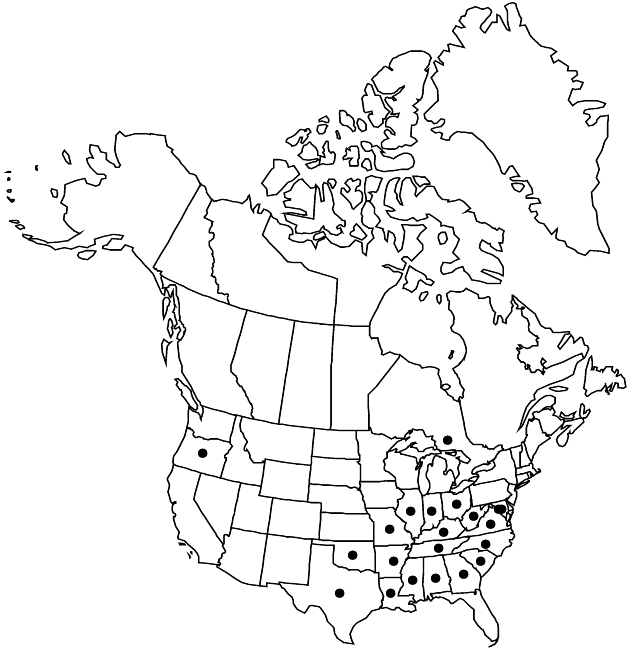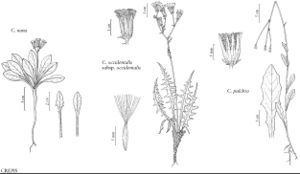Difference between revisions of "Crepis pulchra"
Sp. Pl. 2: 806. 1753.
FNA>Volume Importer |
FNA>Volume Importer |
||
| Line 49: | Line 49: | ||
|publication year=1753 | |publication year=1753 | ||
|special status= | |special status= | ||
| − | |source xml=https://jpend@bitbucket.org/aafc-mbb/fna-data-curation.git/src/ | + | |source xml=https://jpend@bitbucket.org/aafc-mbb/fna-data-curation.git/src/f6b125a955440c0872999024f038d74684f65921/coarse_grained_fna_xml/V19-20-21/V19_303.xml |
|tribe=Asteraceae tribe Cichorieae | |tribe=Asteraceae tribe Cichorieae | ||
|genus=Crepis | |genus=Crepis | ||
Revision as of 18:36, 24 September 2019
Annuals, 5–100 cm (taproots slender). Stems 1, erect, simple, proximally hispid and stipitate-glandular (viscid), distally glabrous. Leaves basal and cauline; petiolate; blades oblanceolate or runcinate, 1–24 × 1–5 cm, (bases attenuate) margins deeply pinnately lobed to denticulate (lobes triangular, terminal lobes largest), apices obtuse to acute, faces densely stipitate-glandular (viscid). Heads 10–40, in loose, corymbiform arrays. Calyculi of 5–7, ovate or lanceolate, glabrous bractlets 1–2 mm. Involucres cylindric (turbinate in fruit), 8–12 × 3–5 mm. Phyllaries 10–14, (green medially) lanceolate, 8–10 mm, (bases strongly keeled and thickened, margins scarious), apices acute, faces glabrous. Florets 15–30; corollas light yellow, 5–12 mm. Cypselae (monomorphic or dimorphic) green to yellowish brown, subcylindric, outer 5–6 mm, inner 4–5 mm, apices attenuate (not beaked), ribs 10–12; pappi dusky white (very fine, fluffy), 4–5 mm. 2n = 8.
Phenology: Flowering Apr–Aug.
Habitat: Dry open habitats, rolling grasslands, pastures, abandoned fields, waste areas, railroads, roadsides
Elevation: 0–3000 m
Distribution

Ont., Ala., Ark., D.C., Ga., Ill., Ind., Ky., La., Md., Miss., Mo., N.C., Ohio, Okla., Oreg., S.C., Tenn., Tex., Va., W.Va., Eurasia.
Discussion
Crepis pulchra is identified by its annual habit; solitary, erect, glandular, and viscid stems; narrowly oblanceolate, runcinate, hispid leaves with relatively large terminal segments; glabrous and strongly keeled phyllaries; sometimes dimorphic cypselae; and fluffy, dusky white pappi.
Selected References
None.
